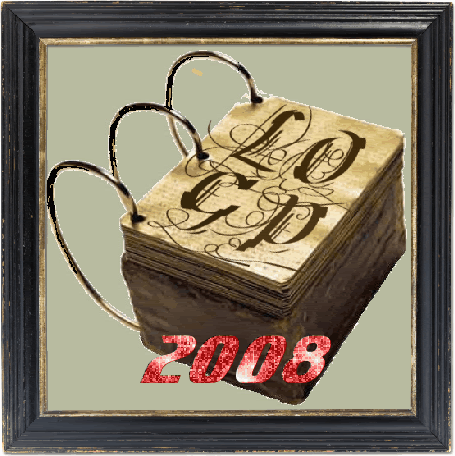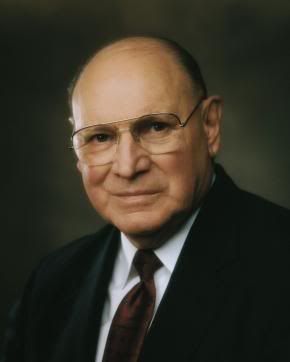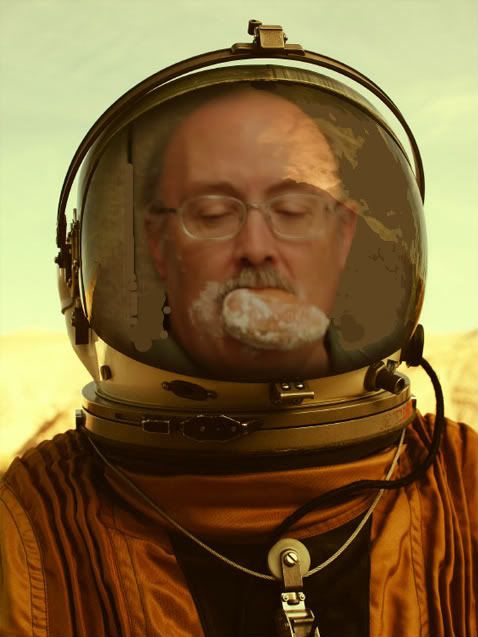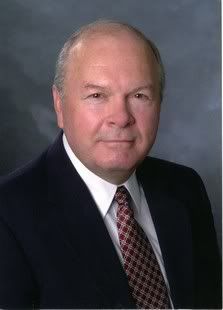Life On Gold Plates 2008: Year in Review
 Since other blogs will be covering Mormonism in 2008 generally I
decided to do a little navel gazing.
Since other blogs will be covering Mormonism in 2008 generally I
decided to do a little navel gazing.
2008 was a formative year for LoGP. (I hit 30,000 visits last week!) Solo blogging can be tough but the site has come a long way from the original conception, which was essentially a slathering of my rather dull and random thoughts. Many of those posts are rather embarrassing now (I wonder what I'll think of this current stuff in a few years). I soon created a new project, "Journey Through the Journal," an exploration of the Journal of Discourses. It seems to have its wheels stuck in the mud; I made it to volume 4 and
there I have stayed. I plan to revamp the series and continue, though
it will not be the general focus of the site which has become a discussion on any number of topics of interest to Latter-day Saints. I learned how to make clickable footnotes, which is awesome. Finally, I bought a .com address and changed the design of the site after seeing the default blogger template being used by a billion other sites.
I want to thank other bloggers who placed links to
my site on their own sites; otherwise I would have practically no
visitors. After being placed on the excellent Mormon Archipelago my daily visits increased dramatically. Being a guest blogger at Juvenile Instructor raised the quality bar for me and I am grateful to them for that opportunity.
Many people found this site via Google and other search engines. Here's a
list of some of the more interesting ways people wound up here over the
last 12 months:
Top Search terms:
-Richard Bushman
-Brant Gardner
-3 nephites
-constitution hang by a thread
-Funeral sermon
Interesting search terms:
Search: "how to hide plural marriage"
Result: "Plural marriage as discussed in the Church today"
Search: "what mormons think about intellectuals"
Result: "Rough Stone Rolling and the Intellectual Prospects for Mormonism"
Search: "humble plates"
Result: "Daniel C. Peterson on Humble Apologetics"
Search: "ex-mormon woman blog"
Result: "Bill Maher's "Religulous."
Search "wife murder celestial marriage"
Result: "May 13, 1857: The Murder of Parley P. Pratt"
Search: "baptize me"
Result: "Rebaptism and the Mormon Reformation"
Search: "who are the kids in jesus saves from hell t-shirts" and "anti mormon t shirts"
Result: "The Street Preachers and Me"
Search: "cigarette ash for toothaches" and "joseph smith alcohol teeth pulled"
Result: "The Development of the Word of Wisdom"
Search: "how to draw a liken"
Result: "'Liken With Care' series with Brant Gardner"
Search: "my life on gold"
Result: Life On Gold Plates
Search: "brigham purses"
Result: "Without Purse or Pig? Brigham's Missionary Wage"
Search: "how many mormons really believe the gold plates"
Result: "Method and Skepticism (and Quetzalcoatl...)"
Search: "meaning of profound thought"
Result: "Sacred Sorrow"
Search: "what is q for that gold has 6 and brown has 4?"
Result: "Matthew Brown: The Israelite Temple and the Early Christians"
Search: "mormon engagement plate"
Result: "Panel: Philosophy and Mormonism"
Search: "obama plates"
Result: "Is Obama the Anti-Christ?"
Top 10 Posts of the Year (in my opinion):
1. Brant Gardner and the "Likening With Care" series
Gardner is an LDS scholar and Mesoamerican specialist who recently published Second Witness: Analytical & Contextual Commentary on the Book of Mormon. Gardner spent some time with me discussing his work and the conversations resulted in a twelve-part series on the Book of Mormon.
2. Richard Bushman's transcripts, seminar, etc.
It began in March when I completed a transcript of Bushman's address at Weber State University called "Rough Stone Rolling and the Intellectual Prospects for Mormonism." Perhaps the most heavily trafficked page on the site this year, his Introduction paper at the 2008 Bushman seminar was a treat to post.
3. 2008 FAIR Conference Notes
I attended both days of the FAIR conference and jotted some notes as things proceeded for those unable to attend.
4. "Quote Mining"
The more I blogged about the Journal of Discourses the more I tried to learn about the proper use of historical sources. This post is the result of some frustration over how I saw some historical sources being used. See "Contrasting Attitudes: Keeping things in context" as well.
5. "Committing Suicide to Get to the Telestial Kingdom?"
This
old nugget deserves closer scrutiny. With the help of Dr. Steuss, J.
Stapely and Steven C. Harper I chased the origins of this idea.
6. "They leave the Church but can't leave it alone"
I took a look at the possible origins of this quote and discussed the concept of apostasy generally, arguing that some people do leave the church and then also leave it alone. .
7. "Plural Marriage as Discussed in the Church Today"
After hearing for the umpteenth time that the Church suppresses information about polygamy, I looked into how current teacher's manuals discuss the issue.
8. "Liken With Care"
Latter-day Saints can be guilty of misusing or misunderstanding scripture and in this post I discuss the concept of likening scriptures to ourselves without necessarily wresting them from their original context using the concept of "apostasy of the early church" as a springboard.
9. "A Visit to the Southern Settlements: The Miracle of Unity"
One
of the better "Journey Through the Journal" posts, it is based upon an
1856 sermon by Parley P. Pratt and combines ideas from Eugene England's
"Why the church is as true as the gospel." Honorable mentions to Spirit Recycling?, "Saints and crockery ware": The Temporal and Spiritual," and "Angels and Outhouses."
10. "The Development of the Word of Wisdom"
A historical though brief look at the development of this principle-turned-commandment, including a J. Golden moment, of course.
Finally, I'd like to thank many Bloggernaclers who have made my participation worthwhile. I can't name them all but a few whose scholarship and kindness have aided and impressed me include J. Stapley, Ardis Parshall, Kevin Barney, Daniel C. Peterson, Richard Bushman (rarely on the bloggernacle himself of course), Dave Banack, Seth Payne, the folks over at Juvenile Instructor, FAIR, New Cool Thang, and many other friends.



 9
Comments
9
Comments





 When
I was young I loved playing sports, and I have many fond memories of
those days. But not all of them are pleasant. I remember one day after
my football team lost a tough game, I came home feeling discouraged. My
mother was there. She listened to my sad story. She taught her children
to trust in themselves and each other, not blame others for their
misfortunes, and give their best effort in everything they attempted.
When
I was young I loved playing sports, and I have many fond memories of
those days. But not all of them are pleasant. I remember one day after
my football team lost a tough game, I came home feeling discouraged. My
mother was there. She listened to my sad story. She taught her children
to trust in themselves and each other, not blame others for their
misfortunes, and give their best effort in everything they attempted.

